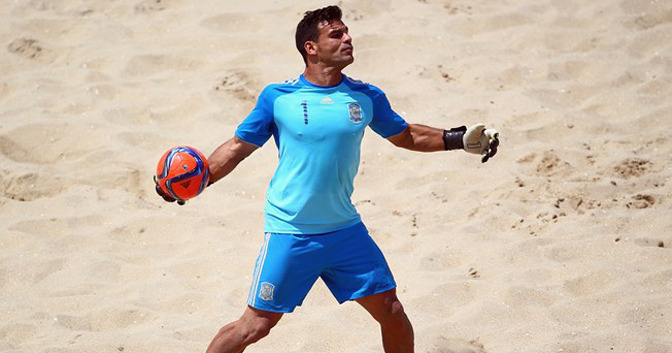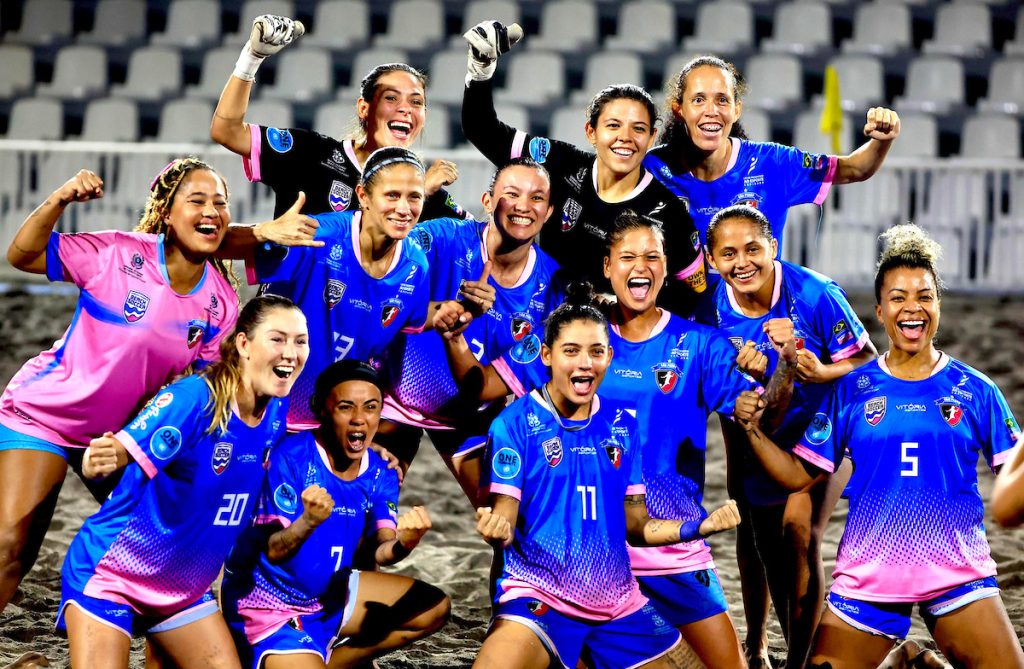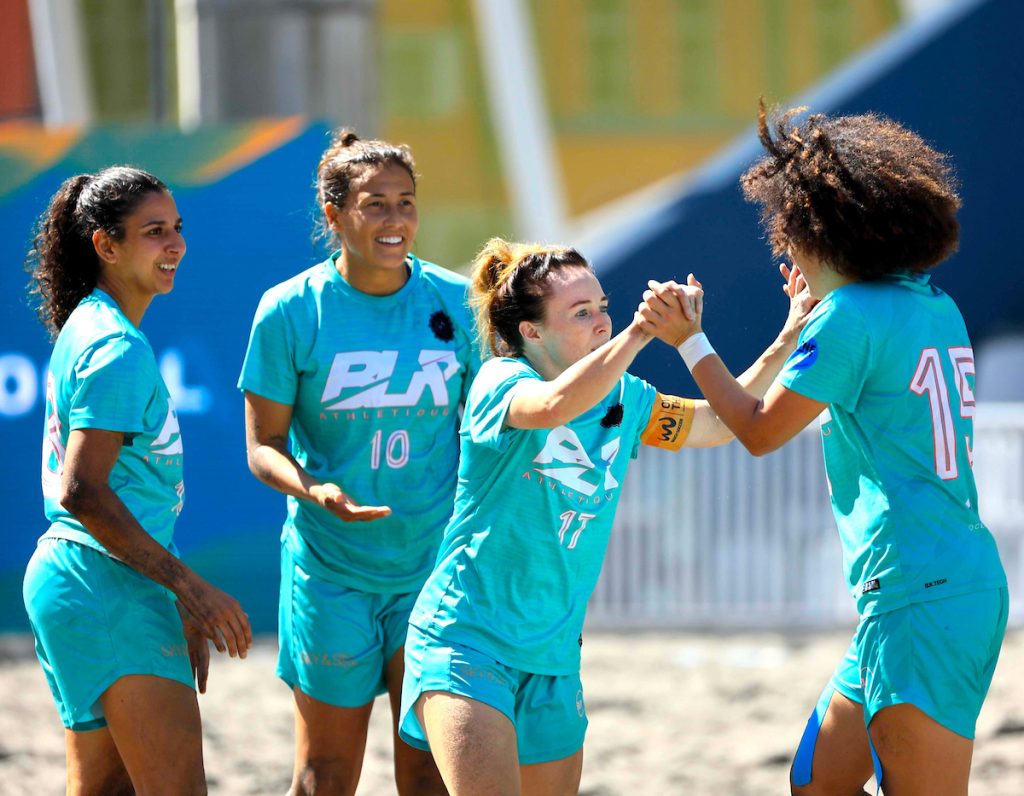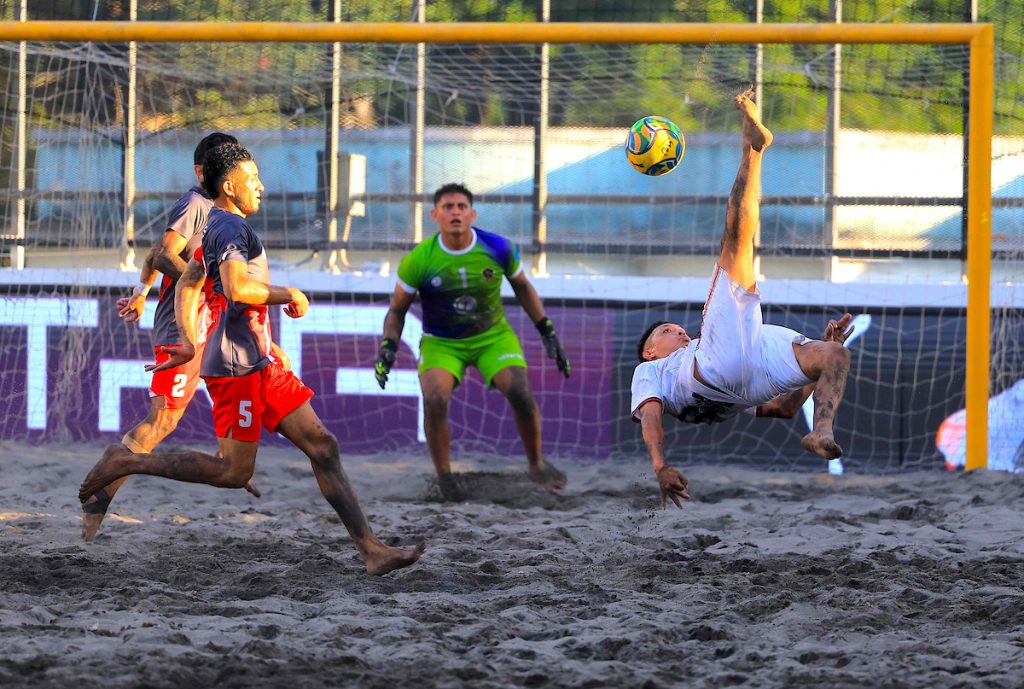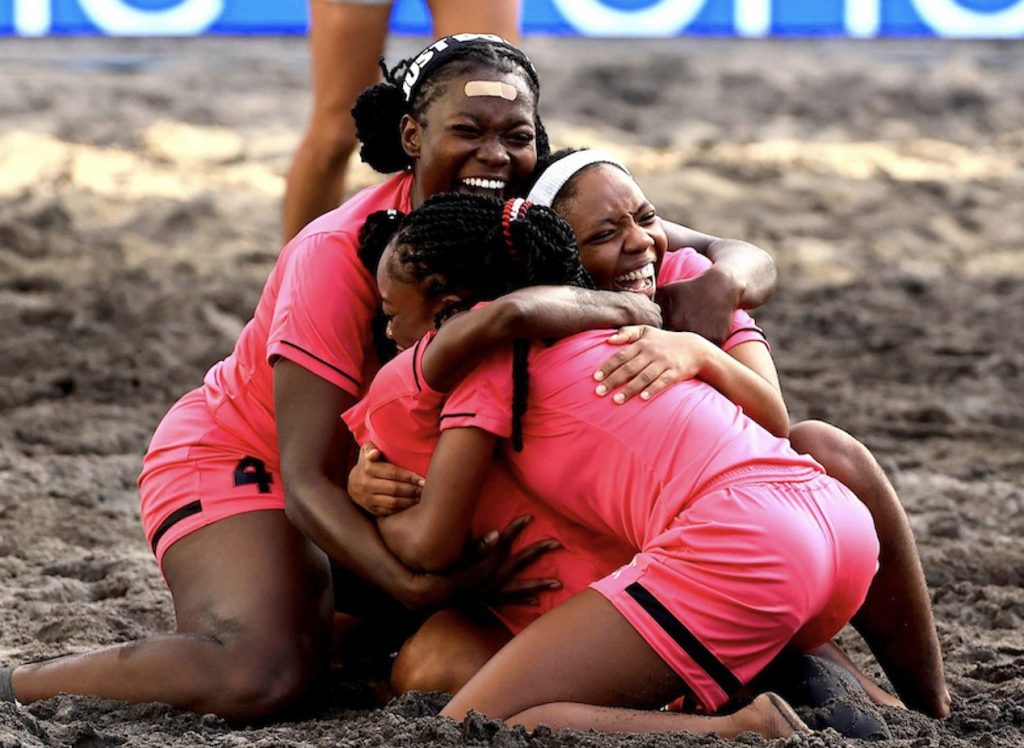Beach soccer is a sport that is controlled not only the defense of the goalies but also their offensive prowess
In modern-day beach soccer, all the things you ever heard about goalkeepers being a solitary breed who are consigned to merely stopping goals count for little.
The game has developed at breakneck speed over the last decade, with teams developing ever more sophisticated tactics. The role performed by goalkeepers has not been immune to the rapid changes beach soccer has witnessed in recent times, and the men between the posts have now become a key part in the offensive aspects of the game
Discussing this development with FIFA.com was Ross Ongaro, a member of the FIFA Technical Study Group monitoring the action at the FIFA Beach Soccer World Cup Portugal 2015 in Espinho.
“In most cases goalkeepers are now responsible for [creating or scoring] nearly 60 per cent of goals scored in a competition,” said the Canadian. “If you think about teams like Iran, Spain or Italy, a large part of their game is based on the ability of the goalkeepers to throw the ball out quickly and accurately.”
Ongaro added: “It’s the goalkeeper who dictates the pace of play and decides who gets the ball in each attacking move. In doing so, they have to assess whether the team’s main attacker is being marked by the opposition’s second or third-best defender. And if the opposition are showing signs of fatigue, they have to assess whether to speed play up.”
“To all intents and purposes, they’re like a point guard in basketball or a quarterback in American football. Coaches can map out plays, but it’s the goalkeepers who make the strategic decisions.”
Speedy service
On top of all that responsibility, the laws of beach soccer allow keepers a mere four seconds in which to decide what they are going to do with the ball and to throw it from their areas.
“In that time I’ve got to look around the whole pitch, choose the best option and then think about how the player I’m throwing to likes to receive the ball,” explained Spain custodian Dona, the winner of the adidas Golden Glove at the last world finals in Tahiti two years ago.
And when it comes to sizing up how and where they will distribute the ball, beach soccer keepers also have to interpret and react to the tactical movements being made in front of them. “I always go by the player’s stronger foot,” Brazil keeper Mao told FIFA.com, revealing his in-depth appreciation of the custodian’s role.
“When a right-footed player drops out to the right, you know it’s got to be a fast ball. If he’s left-footed and on the diagonal, then the throw is longer and flatter. And when the pivot drops into the centre, the ball has to be below knee height so that they can control it, or turn on goal or spread it out to the wings.”
“You could say there’s something mathematical about it. You have to calculate the movement, the time you’ve got and the passes you need to make to each team-mate.”
Practice makes perfect
Mastering the art of the throw-out requires a lot of training. “It’s no coincidence that most teams now have a goalkeeping coach, who works specifically on ball distribution,” explained Ongaro.
As well as practising specific match situations, the men in gloves also have their own training drills to perform, as Mao explained: “We use targets to practice the type of balls you have to throw in matches: parallel, central and diagonal throws.”
“I do 50 to 100 throws every day in training. It’s tiring, but it helps you mechanise the movement and to do it without even thinking.”
Assessing the tactical impact of the goalkeeper’s role, Ongaro said: “When we talk about tactical systems in beach soccer we don’t say 1-3, 2-2 or 3-1 any more. We say 1-3-1 and so on. These days goalkeepers play such a big part that you have to include them in the names of formations.”
When it comes to beach soccer, there is no such thing as a lonely goalkeeper. In the fast-moving modern-day game, they are never out of the action.
(Source: FIFA.com)









